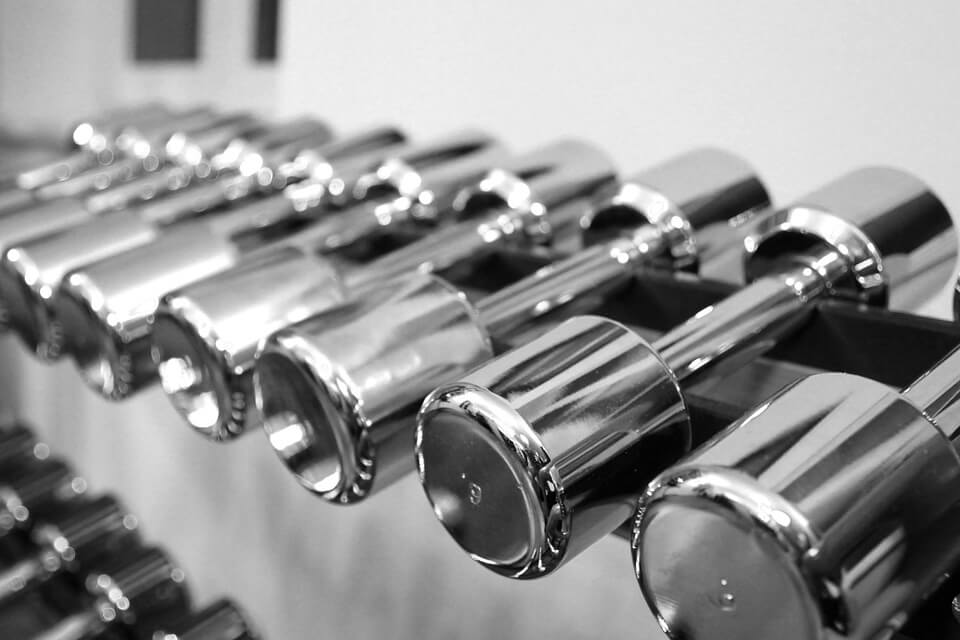My suspicion is that your vision of exercise doesn’t match what actually counts as exercise – it’s possible you either don’t know about some of the options, or you’ve been brain-washed by the fitness industry to believe that exercise is always “go hard or go home!”
How cool would it be if there were a link between your personality type and the type of exercise you enjoy?
Turns out, there is.
A recent study found that “matching an individual’s personality type to a particular type of exercise can increase both the effectiveness and the person’s enjoyment of it.” (1)
Let’s say you’re a fan of the Tough Mudder race, an 8-10 mile mud-soaked race course where participants tackle 25 different obstacles like rope climbing, carrying cement-filled buckets for 50 feet, and pull-ups (chin above the bar, of course!) while hanging from an 8′ tall bar.
It’s dirty. It’s dangerous. It’s ridiculously physically challenging.
Tough Mudder draws folks who find it enchanting to crawl through mud on their belly, wriggle (through mud) beneath barbed wire, and show that chin up bar who’s boss.
Depending on your personality type, from the info I’ve shared you’re either googling Tough Mudder to learn more, or wondering why on earth anyone would pay actual money to participate in that type of crazy, enchanting or not.
And that’s the beauty of the fitness world.
There are as many different physical activity and exercise types as there are personality types, and discovering the type of exercise you love to do so much that it doesn’t feel like exercise?
That’s the goal.
Well, it’s part of the goal. The other part is making sure you get a well-rounded workout, regardless of what your favorite type turns out to be.

Ummmm. No thanks.
The FITT Principle
In this post I tackle the final “T” (TYPE) in the FITT PRINCIPLE, so let’s first consider what to do if your favorite type of exercise is nothing.
It happens.
Not everyone loves or even likes to exercise.
But your body likes it when you do, your risk of breast cancer recurrence decreases when you do, and your ability to manage your weight, energy level, depression and anxiety improve when you do. (2)
Let’s see if after reading this post you can find a certain type of exercise that appeals to you.
My suspicion is that your vision of exercise doesn’t match what actually counts as exercise – it’s possible you either don’t know about some of the options, or you’ve been brain-washed by the fitness industry to believe that exercise is always “go hard or go home!”
It’s not.

The FIVE Elements of a Well-Rounded Fitness Program
There are five elements to a well-rounded fitness program. (4)
Each element is comprised of different TYPES of exercise, and most people find it helpful (and monotony-busting) to mix and match the different types to their fitness level, ability, and interest.
Cardiovascular (aerobic) training.
Resistance or strength training.
Core strengthening.
Balance, coordination and agility training.
Flexibility or mobility training.
Cardiovascular Training
Improves the efficiency of your heart, lungs and oxygen transport which makes performing everyday activities easier.
Cardio exercise also supports healthy blood pressure and improves endurance, both of which are beneficial for managing treatment and recovery. Cardiovascular exercises also appear to be the type most people credit with an “endorphin rush”, and of course, a good heart-pumping workout can help manage stress, anxiety and depression.
- Brisk walking
- Running
- Swimming
- Biking
- Dancing
- Water aerobics
- Cycling
Strength Training
Maintaining lean body mass during treatment for breast cancer can be challenging.
It’s been suggested that 50-96% of early stage breast cancer patients gain significant amounts of weight during adjuvant treatment, yet the reasons behind post-diagnosis weight gain aren’t well understood.
Some weight gain can be attributed to medication, particularly steroid medications and Selective Estrogen Receptor Modulators (SERM’s); research shows SERM’s negatively impact body composition (a different issue than simply weight gain), specifically increasing body fat in the trunk area. (5)
Regardless of how weight gain occurs, important to note is that changes in body composition (lean body mass vs. fat mass) can’t be precisely expressed using only body weight or body mass index (BMI). An increase on the scale can be attributed to any number of variables, including but not limited to fluid shifts, sodium intake or digestive issues.
Research is ongoing to determine how measuring and preserving muscle mass may contribute to more favorable treatment outcomes and improved survivorship, but we don’t need to wait for hard data to confirm the positive impact building lean muscle has on improving and increasing physical strength and stamina.
- Weight training (dumbbells, machines, body weight)
- Yoga
- Water aerobics (use water “weights”) and/or swimming (resistance especially beneficial for upper body)
- Gardening (lifting, pushing, pulling)
Core Strengthening
Core strength comes from maintaining a strong abdomen, pelvis and lower back, which contrary to old-school thinking isn’t accomplished by executing hundreds of abdominal crunches during a single exercise session.
Balanced core training works the core from all angles; front, side and back, and may or may not include any fitness tools other than body weight.
A strong core supports overall body strength and can help reduce or eliminate many types of back pain.
- Planks
- Yoga
- Pilates
- Stability and medicine ball work
- Swimming
Balance, Coordination and Agility Training
One of the most common side effects of medications (particularly aromatase inhibitors or AI’s) prescribed to reduce risk of breast cancer recurrence is joint stiffness, also known as arthralgias. Stiff joints may contribute to your body feeling like it’s off-balance – especially when you first wake up. Perhaps your gait is halted or you shuffle your way to the coffee pot, both which may increase your risk of a fall. (6)
Additionally, if chemotherapy will be part of your treatment plan, keep in mind that your balance potentially could be impacted. An Ohio State University study on people diagnosed with early-stage breast cancer found that just one cycle of chemotherapy can affect walking gait and balance, putting people at a higher risk for falls. (7)
Balance and agility exercises can help prevent falls by improving your ability to control and maintain your body’s position whether you’re in motion or standing still – a wise safety precaution worth practicing. (8)
- Yoga
- BOSU training (also great for core strengthening – see exercise library link below) (9)
- Tai Chi
Flexibility and Stretching
The joint and muscle stiffness I referenced above is only half the battle; aging and inactivity also contribute to tight muscles, and tight muscles have limited range of motion, less ease in performing daily activities, and greater risk of injury.
Your range of motion may also be compromised as a result of lumpectomy or mastectomy, lymph node removal, even radiation and/or chemotherapy treatment. Be gentle and patient with your progress, but also persistent; regular flexibility exercises help you improve over time, even though they may be tough to get started with.
A regular stretching routine loosens stiff joints, elongates muscles and eases muscle tension. Flexibility and stretching exercises can also help ease stress to help make you feel more relaxed – try stretching for short amounts of time several times per day. (10)
- Yoga
- Massage
- Stretching exercises with towel, exercise bands, straps
- Foam roller
- Tai Chi
- Post-surgery exercise collection (11)
In Closing
After reading my post did you find a type of exercise that you think you may be able to “tolerate”? Anything you can do to get and keep yourself moving is wonderful – and there’s lots here to choose from.
Best advice I can share?
Just start!
This post is the last in my overview of all four variables of the FITT PRINCIPLE. Next week I’m wrapping up everything you’ve learned in this six-part series and providing take-away’s to help you maintain your fitness program for life!
You won’t want to miss it.
Get my FREE nutrition and fitness jumpstart worksheet here. . .
SOURCES
- Don’t like going to the gym? It could be your personality
- Can Exercise Reduce the Risk of Cancer Recurrence?
- Simple way to boost cancer survival rates: diet and exercise, studies say.
- Fitness training: Elements of a well-rounded routine.
- Body composition changes in females treated for breast cancer: a review of the evidence.
- Aromatase Inhibitor-Related Joint Pain
- Chemotherapy-Linked Neuropathy Can Affect Balance, Gait Even Years After Treatment Ends
- Balance Exercises After Cancer Treatment
- BOSU Exercise Library
- Flexibility Exercise
- Memorial Sloan Kettering Exercises After Breast Surgery






